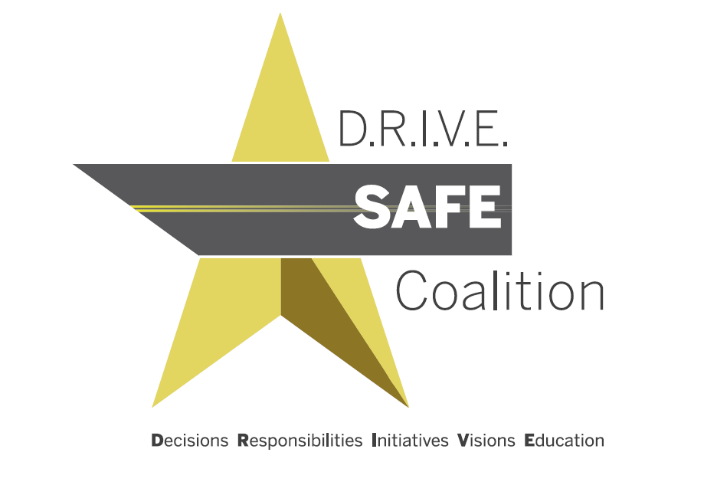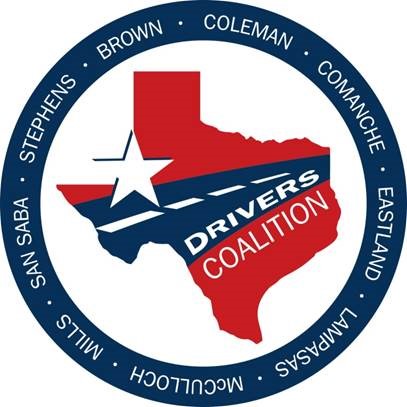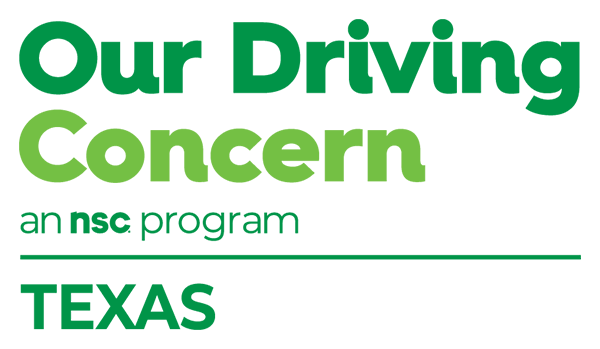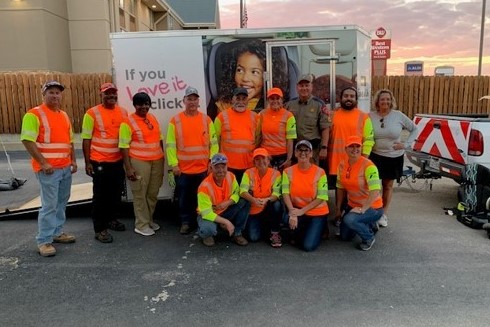Stronger Together
Ask three people to define the word “drive” and chances are you’ll get three different responses. Ask Jill Christie and she’ll tell you drive is an acronym for Decisions, Responsibilities, Initiatives, Vision and Education.

Christie is the coordinator of the D.R.I.V.E. Safe Coalition, which serves 13 counties in the Abilene District. Our team regularly works with her, Texas Department of Transportation traffic safety specialists and coalition members across the state. We’re all partners in a mission to raise public awareness of traffic safety, reduce crash injuries and fatalities.
Our Driving Concern program managers recently delivered four presentations to coalition members. The topic was, What’s Up with Our Driving Concern? The presentations focused on a variety of new resources we’ve created for Texas employers and the upcoming free training opportunities for their safety coaches.

We reached out to Christie and Kristi Harwell, coordinator of the DRIVERS Coalition, which serves nine counties in the Brownwood District. They spoke to us about strong partnerships and the impact of TxDOT coalitions, concluding partnerships can improve information exchanges, resource allocation, community outreach, buy-in, commitment and involvement.
- Strength in numbers
- Strength in relationships
- Strength in diversity
- Strength in resources
TxDOT coalition members meet monthly – in person or virtually. Speakers focus on traffic safety challenges. Discussions center on planning for events, such as Distracted Driving Awareness Month, impaired driving educational opportunities, seat belt safety rollover simulations, car seat checkups, bicycle rodeos and community health fairs. Crash statistics are presented at every meeting, and data is used to guide efforts in each TxDOT district.
Harwell and Christie spoke specifically about promotion of TxDOT traffic safety campaigns and PI&E: public information and education.
“Effective community partnerships are formed with organizations that share similar goals and are willing to designate responsibilities for achieving them,” Christie said. “The more diverse and influential the membership, the stronger the coalition will be.”
To keep abreast of activities, TxDOT coalition members are notified via email and receive invitations to attend meetings. Interested in becoming a member? Reach out to a TxDOT traffic safety specialist in your district. Find one near you with the Traffic Safety Specialist Contact List.
Or, let us help you improve your safety program: Contact Us. Together, we are stronger, and Texas roads are safer.

Light the Way
You plan for today. You plan for tomorrow. Be sure to plan for safety, too. Start with this goal:
- Raise awareness of road safety risks ahead of the upcoming St. Patrick’s Day weekend (March 17-19)
Then, devise a plan that includes education and training. Expand how you define impairment at your location. Teach your friends and coworkers to think of impairment as anything that can impede their ability to function normally, from chemical substances (alcohol and drugs, including cannabis) to factors such as fatigue and stress. All can impact job performance and safety behind the wheel.
During a safety meeting, list items considered synonymous with St. Patrick’s Day celebrations: leprechauns, shamrocks, green beer, green clothes, corned beef and cabbage. What else can you think of? Share crash data and this message: Have fun, be safe. Last year, 1,077 people were killed in crashes in Texas where a driver was under the influence of alcohol, according to the Texas Department of Transportation.
That’s nearly three people every day. Instances of impaired driving increase on weekends and during holiday driving periods. This year, St. Patrick’s Day falls on a Friday – at the start of a weekend. Share simple steps to protect yourself and others:
- If you’re going out, plan ahead for a safe ride home.
- Use a rideshare service or volunteer to be the designated driver.
- Buckle up in every seat, every time. Seat belts are your first line of defense in an impaired-driving crash.
Create engagement with this BAC Test: Understand how your blood alcohol level can remain elevated long after you have stopped drinking.
Get free resources from the National Highway Traffic Safety Administration and begin a safety conversation on your social media channels.
Be aware that alcohol is only one of many substances that can cause impairment. Prescription and over-the-counter medications can cause dizziness and fatigue. Medical use of cannabis in Texas was legalized in 2015. Now, hemp and products with CBD, the active ingredient in cannabis, are found in stores across the state.
Get free resources from the National Safety Council and plan for making a broader safety impact as you focus more on impairment in the days and weeks ahead. Start here:
- Cannabis: Four recommendations for employers
- Fatigue: Get this employer safety toolkit
- Opioids: Order free warn-me labels and return envelopes for prescription opioids
- Stress: Promote employee mental health and wellbeing
More than 100,000 people die every year in the U.S. of drug-involved overdoses. Employers can be on the front line of prevention. Join us for free online training Wednesday, March 8: Opioids and Central Nervous System Depressants/Stimulants: A DITTE Deep Dive.
We’ll explore the effects of opioids, including fentanyl, and other narcotic analgesics on employees and employers. Take what you learn back to your location.
You’ve set a goal to address impairment. We’ve helped you identify resources to assist with your education and training efforts. Now, it’s time to execute your plan. Be sure to measure your success so you can report progress up the chain. As always, our team is here to help: Contact us.

